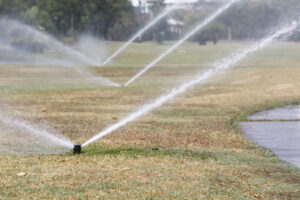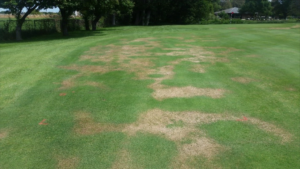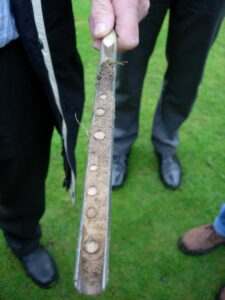How to cope with a hot, dry summer
Related Articles
Spring 2022 saw low rainfall levels affecting many parts of Europe and this was followed by extreme July temperatures. For the majority of turf managers, this meant having to cope once again with the challenges of drought and heat stress.
Changes to climatic conditions are very real. The European climate change monitoring service Copernicus reported 2021 as the hottest European summer ever, whilst Europe’s five hottest summers have been recorded in the last two decades. In the UK, winters are expected to become warmer and wetter, whereas summers are projected to become hotter and drier. These predictions have been playing out in front of us, with the summer drought of 2018 causing widespread turf damage. On some golf courses, the loss of turf cover on unirrigated fairways has still not fully recovered. Grass cover has been re-established but grass species composition has deteriorated.
When climatic conditions combine to put intensively managed turf under this type of pressure, sometimes planned maintenance programmes must be put on hold. For many, the best course of action was to reduce mowing pressures, relax aeration and top-dressing inputs and concentrate solely on managing moisture levels within the constraints of existing irrigation systems and water availability.
Turf performance can be measured objectively using several techniques and for many turf managers, recording and tracking moisture content is the key factor. This is the one measurable that underpins everything else – from firmness of putting surfaces in winter to sward composition, consistency, ball roll and green speed in summer.
Being informed is the first step and for many turf managers recording moisture levels has become part of daily routine. Building up a database of moisture content becomes increasingly valuable over time. Data can be collected using a variety of specialist equipment and for those who still don’t have access to a moisture meter, make this a priority ahead of next season. Having real time data enables informed decisions to be made about irrigation inputs, in turn improving turf surface performance and plant health.
Once the immediate pressures of drought and heat stress have passed, it is critical to ensure that soils and rootzones are remoistened to depth through the late summer and autumn period. Superficial greening up after rain will often mask continuing water repellency and hydrophobicity in profiles across all in-play areas, including greens but also on tees and fairways.
This autumn, take time to revisit areas where there were signs of drought stress and if soil water repellency is suspected then carry out the simple water droplet penetration test (WDPT) to identify the presence and severity of any remaining hydrophobicity and allow this to be fully addressed. Getting moisture back into the ground is the next step. Until uniform moisture levels are restored, there is little benefit to investing time and resources in grass recovery programmes.
With more frequent hot, dry summers being predicted, it is ever more important to put robust wetting agent programmes in place to prepare for these extreme weather events. It is necessary to make the investment in regular, proven wetting agent applications as a part of a considered annual programme to ensure better use of applied water. Autumn and winter treatments are more likely to be needed this year following the prolonged, dry weather. For site specific product recommendations, contact your local Aquatrols distributor. Next season’s turf performance is reliant on sufficient moisture reserves being back in the ground.
Aquatrols has been investing in technology and research over the past 65 years to ensure that its water management products perform under pressure. Research has shown that Aquatrols products improve water efficiency and maintain turf quality with reduced irrigation inputs. This approach to research and development gives turf managers confidence in these products; the confidence that Aquatrols water management products will perform as expected, optimising plant health and consistency of turf surface performance despite the pressures.
For more information, visit eu.aquatrols.com





























